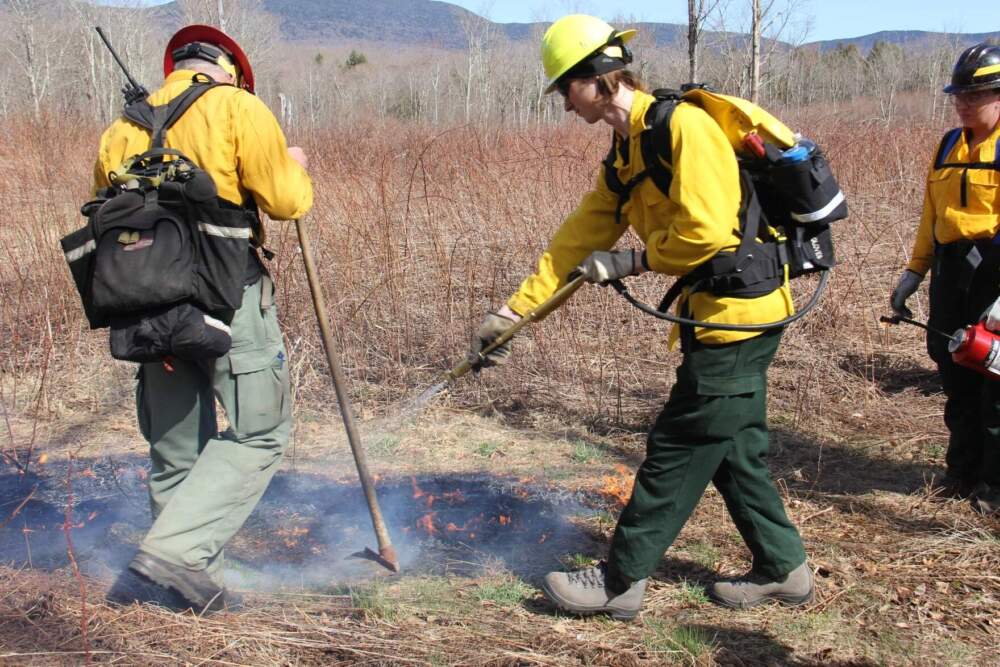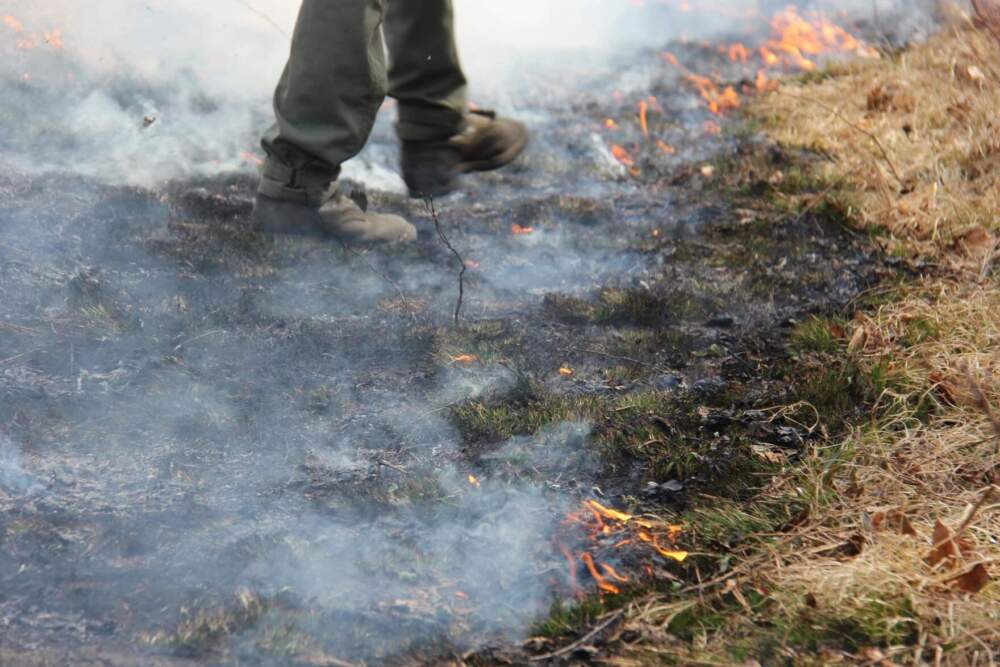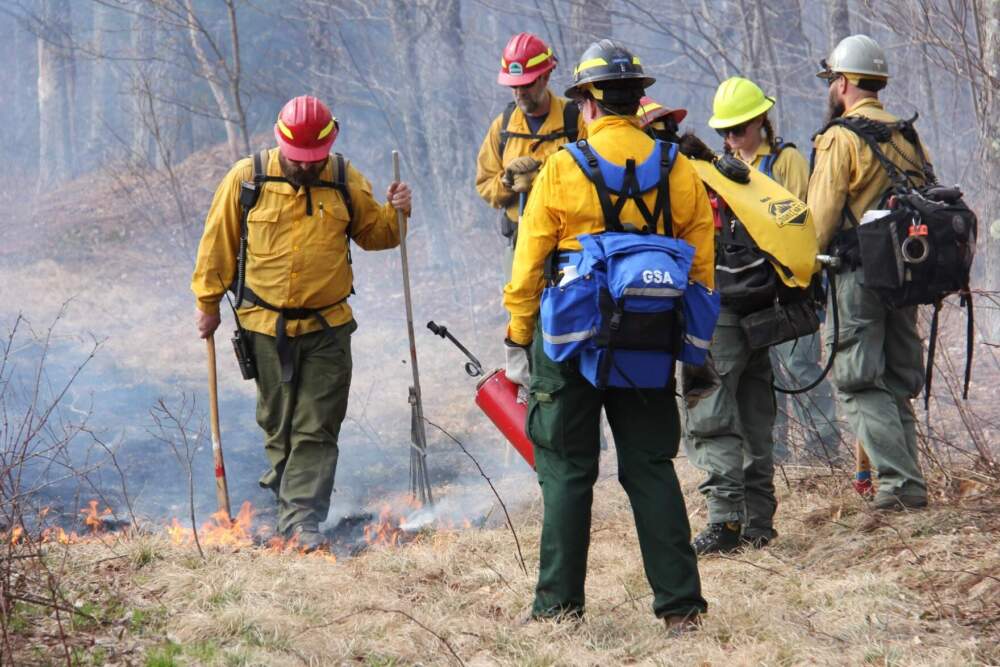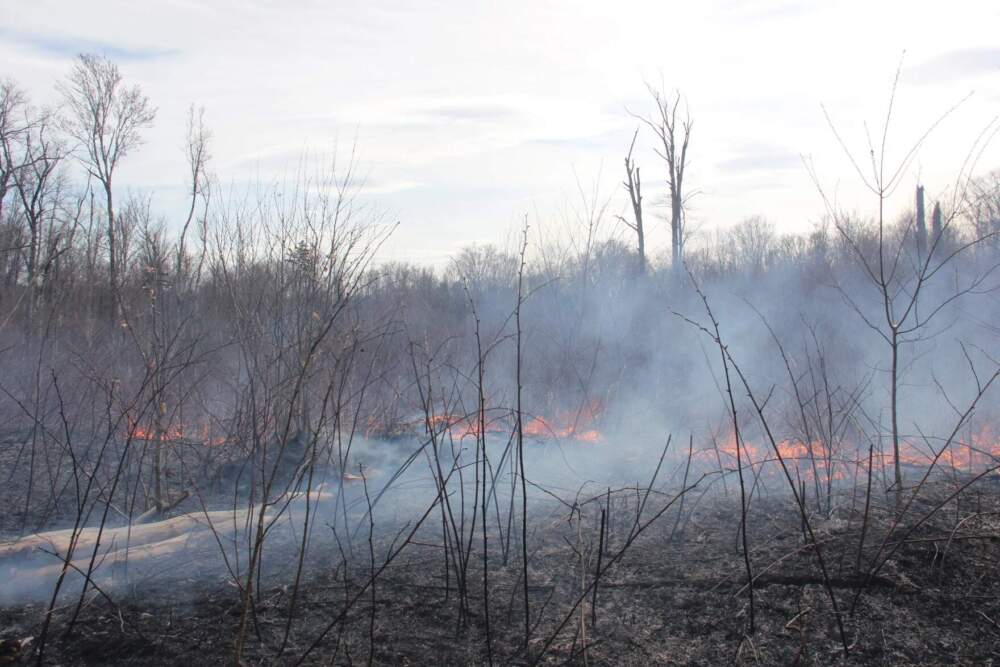Advertisement
Why firefighters burn hundreds of acres in the Green Mountains each spring

Back when the grass was still brown, on an unseasonably warm day in April, about a dozen staff from the U.S. Forest Service and Vermont's wildland fire team drove out to the Green Mountain National Forest in Ripton.
Only, they weren’t putting out any fires. They were lighting them, on 13 acres at a place called Norton Farm.
It was one of dozens of prescribed burns that take place nearly every spring in the Green Mountains. The point of these fires is to help wildlife.
“Most of the state is forested. Having these wildlife openings keeps area where sun’s hitting the ground for pollinators, for grassland birds, for basking reptiles,” said Meredith Naughton, a wildlife biologist with the Forest Service.

These planned burns are often in areas that have been heavily altered by people, like old farms or land that was logged. The goal is to keep forests from growing back, because many animals rely on this edge habitat.
“The early successional growth — the pin cherries, the raspberries, things like that, that are different from our matrix forest,” Naughton said.
It takes a lot of people and equipment to do this work. To prep the area, crews use leaf blowers and hand tools along the edge of the burn site.
If conditions are safe, they light a thin line of fire along the perimeter, called blacklining. This acts as a buffer to keep fire from escaping.

Teams of firefighters walk along the burn site, lighting fire and monitoring the edge with water in backpacks or in a tank on the back of a UTV to stop any flames from spilling over.
This process also acts as a test to see how the fire behaves and whether it’s safe to burn the whole area.
Besides creating habitat for wildlife, these fires also get rid of dried-out grass, brush and downed logs on the landscape. This could help prevent uncontrolled forest fires going forward, especially as droughts become more common and the fire season shifts earlier. That’s a big reason to do prescribed burns out west.
“Out here, it’s kind of reversed — we're primarily burning for wildlife,” said Ryan Hughes, who manages forest fires for the Green Mountain and Finger Lakes National Forests.

In Vermont, wildfires don’t happen as often, or get nearly as big, and the fire season is limited to the spring and fall. So controlled burns aren’t planned specifically to prevent the spread of wildfire.
But there has been movement within the Forest Service to do more of these burns in places where forests have evolved to live with fire, not just in areas that already have openings.
“We are looking at some of these areas that are fire-adapted natural communities where we expect to see fire in the future,” said Lindsay Rae Silvia, who plans prescribed fires with the Forest Service.
“Communities of oak, pine, red pine, pitch pine, chestnut oak, red oak and then all of the other natural plant communities that are associated with those overstory species.”

These patches of oak and pine forests need fire to survive, and some haven’t burned for over a hundred years. Researchers at the University of Vermont are mapping more of these areas this summer, which could be targeted for prescribed burns going forward.
But that will have to wait. Firefighters burned some 850 acres across the Green Mountain and Finger Lakes National Forests this spring.
By now, fire season in Vermont has passed. Our forests are too green.

This story is a production of the New England News Collaborative. It was originally published by Vermont Public.